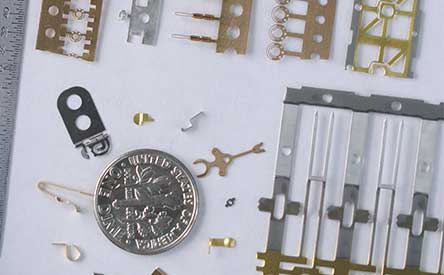 A teacher of stamping die noticed that many in her class were new to the pressworking and stamping die industry. Some of the attendance were recent hires who were just starting to learn about stamping while others were present employees who had been transferred from a different department. Therefore, the common question that both groups had was what exactly is a stamping die?
A teacher of stamping die noticed that many in her class were new to the pressworking and stamping die industry. Some of the attendance were recent hires who were just starting to learn about stamping while others were present employees who had been transferred from a different department. Therefore, the common question that both groups had was what exactly is a stamping die?
A stamping die is a one-of-a-kind, special precision tool that will cut and form sheet metal into a desired profile or shape. The die’s forming and cutting sections are normally made from a special type of hardened steel which is called tool steel. The dies can also contain forming and cutting sections that are made from carbide or other various hardened, wear type resistant materials.
Stamping is well-known in the industry to be an operation called cold forming. This simply means that there is no introduction of heat into either the sheet material or the die. Nevertheless, due to the fact that heat will be generated because of friction during the forming and cutting process, the stamped parts that exit will be extremely hot.
A die can range in size from one that can fit into the palm of your hand to one that is used in microelectronics. There are even specialty dies that are 10 feet thick and 20 ft.² that we see being used in the automobile industry.
Cutting is typically the most common operation that is done in a stamping die. A piece of metal is severed by allowing it to go between 2 tool steel bypassing sections. These sections will have a tiny gap between them that is called the cutting clearance. A cutting clearance will change in relation to the type of cutting operation that is being performed, the desired edge condition, and the metal’s properties.
The cutting clearance is often expressed by means of a percentage of the thickness of the metal. The most common cutting clearance is approximately 10% of the metal’s thickness. You require an extremely high force to cut metal. In the majority of cutting operations, the metal will be stressed to a point of failure. This will produce a cut edge that has a shiny portion that is often referred to as a shear, cut band, brake line, or fracture zone.
There are various cutting operations and each one has a special purpose. Some of these cutting operations include trimming, notching, piercing, lancing, blanking, and shearing.





